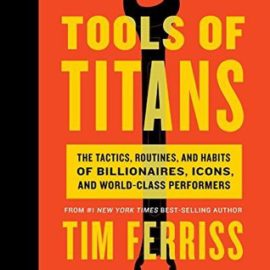Want to learn the ideas in The 5 Levels Of Leadership better than ever? Read the world’s #1 book summary of The 5 Levels Of Leadership by John C. Maxwell here.
Read a brief 1-Page Summary or watch video summaries curated by our expert team. Note: this book guide is not affiliated with or endorsed by the publisher or author, and we always encourage you to purchase and read the full book.
Video Summaries of The 5 Levels Of Leadership
We’ve scoured the Internet for the very best videos on The 5 Levels Of Leadership, from high-quality videos summaries to interviews or commentary by John C. Maxwell.
1-Page Summary of The 5 Levels Of Leadership
Leadership Is a Journey
Developing as a leader is like going on a journey. As you progress, there will be five different levels of leadership that you’ll go through. Each level requires more work than the last, but it gets easier after each step. You can’t skip any steps and must always carry your previous knowledge with you in order to move up to the next level. The higher up in leadership roles you get, the more fulfilling it is because at the top of your game, you have an opportunity to develop future leaders and create a legacy for yourself.
Level 1: “Position”
When you become a manager, your leadership journey begins. A person who believes in you gives you a managerial position. You need to show that person and your employees how you can help them succeed by using the following steps:
Just having a high position doesn’t make you a leader. If you want to grow your company, be sure to develop yourself by expanding your capabilities. Leaders who are just in high positions tend not to value their employees and play politics instead of valuing people. They can also create an entitlement mentality that leads good workers to quit because they cannot stand the bad leadership. People often leave jobs because of poor bosses.
Positions and titles don’t mean much. John Maxwell, a pastor-author, expected to run his church’s meetings. But Claude, a farmer from rural Iowa, ran the meeting instead. Titles didn’t matter to him; he said that “the letters before or after someone’s name are like the tail on a pig—they have nothing to do with quality of bacon.”
A good leader should not order others around but instead inspire and encourage them to act. A good leader should ask how he or she can help others, rather than asking for help. It is important that a good leader does not forget his or her place in the hierarchy of things and does not abuse their position by ordering people around. Instead, they should learn from former Massachusetts governor Christian Herter who stopped at a church BBQ for lunch one day and asked for another piece of chicken after finishing his first plate. When he was refused more food because it was against the rules, he said “Lady! Do you know who I am? I’m the governor!” The volunteer responded with “Do you know who I am? I’m in charge of this chicken.”
Level 2: “Permission”
Leadership is important. Some leaders choose to focus on productivity while others focus on building relationships with their team members. These relationship-oriented leaders may not be as productive, but they’re better at managing the people in their organizations. Leaders who are more focused on productivity should transition from Level 2 to Level 3, where efficiency and production are key. However, soft leaders may get too comfortable in this stage of leadership development and never move forward to the next level because they don’t have a strong enough desire for results.
At this level, your objective is to develop relationships with the people who work for you. To do that, you must understand each person as a whole person and deal with their pluses and minuses, personal issues or problems. You should be a good listener and maintain a positive attitude toward personnel issues. Your employees will give you their best efforts when they feel supported by your leadership.
Define your values and put them into practice. Thank those who helped you reach the position that you’re in now. Surround yourself with people who are better at certain skills than you are, so that they can help fill in any gaps that may exist. Admit when there is something that you don’t know about or understand yet and seek advice from others to figure it out. Know what your strengths are and where you need improvement, as well as what tasks require your attention most urgently, so focus on improving the areas of weakness first rather than spending time on things which come naturally to you already. Seek feedback from others to improve upon any weak points in your leadership abilities and polish up those skills before tackling more difficult situations with employees whom do not meet expectations for their jobs – like having a difficult conversation with an employee who isn’t meeting expectations for his job duties (for example: he’s late all the time). Before starting such a conversation, consider these tips:











